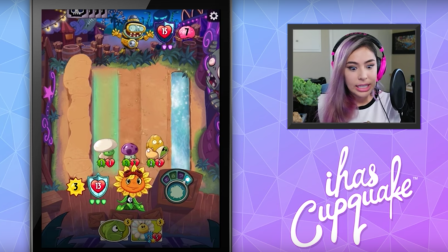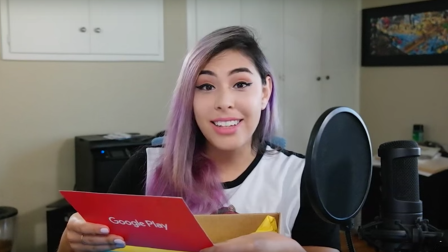Inside Google Play’s branded YouTube show that spanned 23 channels
Google Play and Portal A took a risk by distributing a branded show across 23 YouTube channels, reaping more app installs than expected but fewer views.

Google Play and production studio Portal A tried to pull off something tough with the app store’s latest digital video campaign, “Game Fest.” Instead of airing its branded video show in one place like a dedicated site, Facebook page or YouTube channel, Google Play uploaded each of the series’ 23 episodes to a different YouTube channel. That’s like ABC airing “The Bachelorette” on a new TV network each week.
“What we decided to do was, instead of creating a show that lives on the Google Play [YouTube] channel and features influencers as talent, to create a show that lives across YouTube on over 20 different channels,” said Portal A managing partner Zach Blume.
Google Play and Portal A had already tried the more traditional route last year. The pair produced “Game On,” a 20-episode series that pitted top YouTube gamers against one another playing mobile games Google Play chose to promote. “It was a success, but we wanted to build on the format this year and build a much wider audience,” said Blume. In order to do that, the campaign needed to become more centered around the creators it featured.
One thing that became clear to Google Play and Portal A in sifting through last year’s results was that viewers tuned in to see specific creators that they liked. So for the follow-up campaign, the brand and production studio centered the campaign around the creators. Each of the 23 participating creators — including top YouTube gamers like iHasCupquake, CaptainSparklez and SeaNanners — would post a video to their own channels of themselves playing a brand-picked Android game and then challenging a fellow creator to play another.

Side note: If you think the format sounds very much like the Ice Bucket Challenge, you’re not alone. But execs from Google Play and Portal A said the 2015 Cannes Lions Grand Prix for Good winner never even crossed their minds when brainstorming the follow-up to Google Play’s “Game On” campaign that ran last year. Fine. Then let’s talk about another kind of challenge.
A major challenge for the campaign from the jump would be getting people who watched one video to stay tuned for another. That can be tough enough if the video is on the creator’s same channel, but in this case, the next video was on another channel starring a different creator.
“These viewers are watching for very particular creators, so there’s an inherent risk that they’re not going to watch a video because they’re not engaged with a particular creator,” said Google Play product marketing manager Kala Chapman.
To boost their odds, Portal A took advantage of YouTube’s tools that can make it easier for people to go from one video to the next. Each video included interactive cards that people could click on to watch the next video in the series or check out the campaign’s full playlist. “The infrastructure of YouTube, in many ways, is built for viewers to watch not just one video but consecutive videos or get led from one video to another,” said Blume.
At most, one of out every 37 people who watched a video from the campaign tuned into a second consecutive one, according to Portal A. That figure is “more than we could have anticipated or wished for,” said Blume.
As for the remaining 36 of those 37 viewers, even though they bounced after one video, “we’re still delivering to them a very meaningful and fun and engaging experience with one of their favorite talents and driving them toward the Google Play game store,” he said. “Even if the show component of this was a complete failure, which it’s not, that’s the most important part.”
The number of game downloads spurred by the campaign “far and away surpassed” the goal Google Play had set going into the campaign, according to Chapman, who didn’t share actual numbers.
The campaign also surpassed the brand’s social engagement goal. As of June 30, it had notched more than 75 million impressions across Facebook, Twitter and Instagram from creators’ posts tied to the campaign. And the campaign attracted more than 175,000 engagements across YouTube, Facebook and Twitter, which means people liking, commenting or sharing a video or video-related post tied to the campaign.
But the number of video views the campaign generated “didn’t quite hit the goal we set,” said Chapman.
The campaign’s 23 videos have combined to tally more than 3.6 million views as of Tuesday, and Blume said he expects the figure to hit 10 million over the next six to 12 months. But of the 23 YouTube creators who participated in the campaign, 19 creators’ videos garnered fewer views than the number of views their average YouTube video receives over the course of 30 days, according to data from digital video measurement firm Tubular Labs, which looked at three months’ worth of video viewership data for each of the participating channels.
The campaign may not have been the viewership success that Google Play had hoped for, but it isn’t considered a failure, either. The brand is already hoping to use the format again for another campaign later this year, and Chapman believes that the brand won’t need to lower its viewership goal to meet the mark with the next attempt.
Instead she wants to revisit the campaign’s scheduling strategy. For “Game Fest,” the 23 episodes were released in batches over the course of three weeks. That may have contributed to the viewership miss. After each episode posted, viewership would spike for about a day or two, until the creator released a new video, at which point viewership “would largely drop off,” said Chapman.
The three-batch schedule didn’t capitalize on the viewing patterns of each creator’s audience. Just as people grow accustomed to tuning into new episodes of “Game of Thrones” on Sunday night, people grow accustomed to checking out new videos from their favorite creators on certain posting schedules. So Chapman wants to see if the next campaign’s videos might fare better if scheduled in accordance with each creator’s unique viewership patterns. In short, the more creator-centric the campaign, the higher potential for it to succeed.
Marketing Land – Internet Marketing News, Strategies & Tips
(38)



